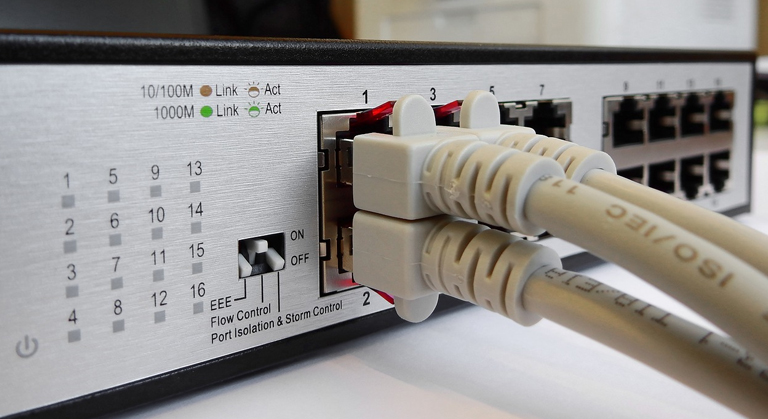When should an older UPS be replaced by a new one? All IT departments face this dilemma at least once. While the question by itself might seem to be simpler, the answer to it depends on the careful analysis of several factors. However, the three primary factors that determine the answer to this question are:
- Present condition of the UPS and its capabilities
- Upcoming requirements of the department
- Constraints that the management might face over time
How to Understand When to Replace a UPS with a New One?
However, before you consider the above-mentioned options, it is wise to first determine whether the battery is at the end of its runtime or not. The following situations will help to replace the UPS at the right time:
- Unavailability of Spare Parts: If the spare parts of the UPS are not available both from third party sources as well as the OEM (Original Equipment Manufacturer), there is no point in servicing or maintaining the emergency power supply.
- Termination of OEM Support: In case the manufacturer has stopped the production as well as the service support for a UPS model, then it would be impractical and expensive to keep up the routine maintenance of the product.
- Increase in the frequency of Maintenance: The age of the UPS is directly proportional to the frequency of its maintenance routines. A time may arrive when the maintenance costs may exceed the benefits and costs of installing a new UPS. In case the company wishes to avoid additional maintenance costs, then it can opt to either upgrade or buy a new UPS.
- Inability to Meet Essential Performance Requirements: Each and every organization has a certain set of performance requirements that have to be met to fulfill long- and short-term goals. If the UPS is unable to meet these crucial performance requirements, then it is high time to let it go or consider options for replacing it.
Comparison of Options:
Most IT departments use three-phase UPS power supplies as backup power. Once the emergency power supply is at the end of its shelf life, the owner has three potential options in his/her hands. He/she can let the battery run to fail, can upgrade to a newer model, or can opt to buy a completely new product to power the IT department. Each of these options comes with its own set of disadvantages and advantages, which have been detailed in the following section.
Run to Fail:
In this scenario, the managers of the IT department can keep the older UPS in service till it reaches the end of its runtime without investing too much in the maintenance or upgradation of the device. However, this does not imply that the management will not be monitoring the status and condition of the UPS regularly. Even though the device is being run to ground, it is still connected to a number of systems in the department. Thus, it is essential to monitor the UPS to detect any arising problem beforehand.
If the UPS, manages to avoid load failure unexpectedly, then the “run to fail” option would be the most cost-effective compared to others, causing a minimum amount of disruption to the daily operations. However, sudden failure and load drop will always be a looming threat to the organization if they decide to keep a worn out UPS power supply in service.
Upgrade to a New UPS:
In case you are skeptical to let your dying UPS run to fail but do not want to opt for a new one, upgrading is the best choice for you. Third-party servicing centers and the original manufacturers frequently provide resources to restore the UPS to its previous glory by replacing the damaged parts with new ones. These supplementary services generally come with a warranty of a year and reduce the risk of imminent UPS power supply failure by extending the battery life of the backup power supply.
Another advantage of upgrading is the easy implementation and installation of the new parts. While installing these new parts in the old system is certainly risky and can interrupt ongoing operations for some time, it is still a better gamble than introducing a whole new UPS supply in the department.
Buy New UPS Supplies
A number of factors can prompt the manager of an IT department to replace the old UPS with a new one. Compared to other two options, buying a new UPS would come with the lowest long-term risk, but a comparatively higher initial investment. However, it must be noted that the initial installation charges will be balanced off against reduced operating expenses.
Apart from the monetary part, a number of other factors also favor an old UPS getting replaced by a new one. For instance, if the UPS no longer receives service support from either the OEM or third party service providers then the office manager will be left with no choice other than to buy a new emergency backup power.
Moreover, maximum upgrading options come for modern and standardized UPS designs. Thus, if the UPS is more than 10 to 15 years old and is non-modular in design, it is better to replace it with a new modular designed UPS system.
Final Takeaway:
Dealing with the maintenance of an aging UPS power supply is not a simple and obvious choice given that there are a number of options present in the market today. Hopefully, this article will assist you to make a sound and informed decision on how to deal with your worn out UPS. While all the above-mentioned recourses are applicable for old UPSs, it depends on the IT department managers to choose the option best suited for the company.
To know more and get the best quality UPS power supply systems, please contact us. You can also avail rental services for UPS supplies in cheaper prices.

